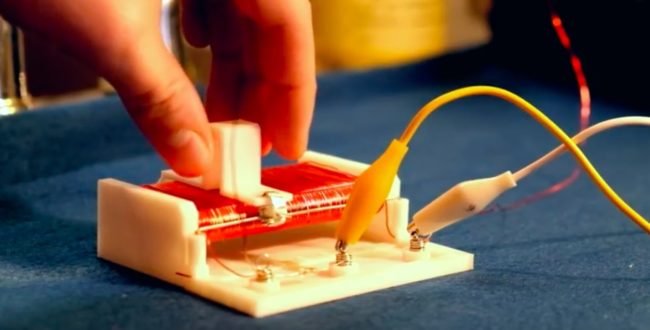(Source: Southgate ARC)
Did you know you can build your very own working 3D-printed radio – without any soldering, electronics experience, electric cord, or even batteries?
Digital Trends reports that’s exactly what talented Houston, Texas-based 3D-printing and electronics enthusiast Sage Hansen has created. And he’s willing to show you how to do it, too.
Called a crystal radio receiver, or sometimes a “cat’s whisker receiver,” this is an incredibly simple type of radio receiver that was popular in the earliest days of radio. The only power it requires to work is the received radio signal, which is used to produce sound. It is named after its most important component, the crystal detector or diode.
“AM radio was one of the first ways of transmitting audio to a very broad audience in the early 1900s, but it is still very popular today,” Hansen told Digital Trends. “It starts with the radio station converting their audio sound waves into electromagnetic waves, which can travel great distances.
Each radio station uses a specific frequency that is constant, but the sound waves are mixed so they amplify and modulate the base radio wave. What makes the crystal radio so exciting is how simple the circuit is, and how it can be made out of normal household items.
Watch the video and read the full story at
https://www.digitaltrends.com/cool-tech/3d-printed-working-radio/


Clever … I only wish more humans would use their brains and personally investigate instead of relying on others to think for them …